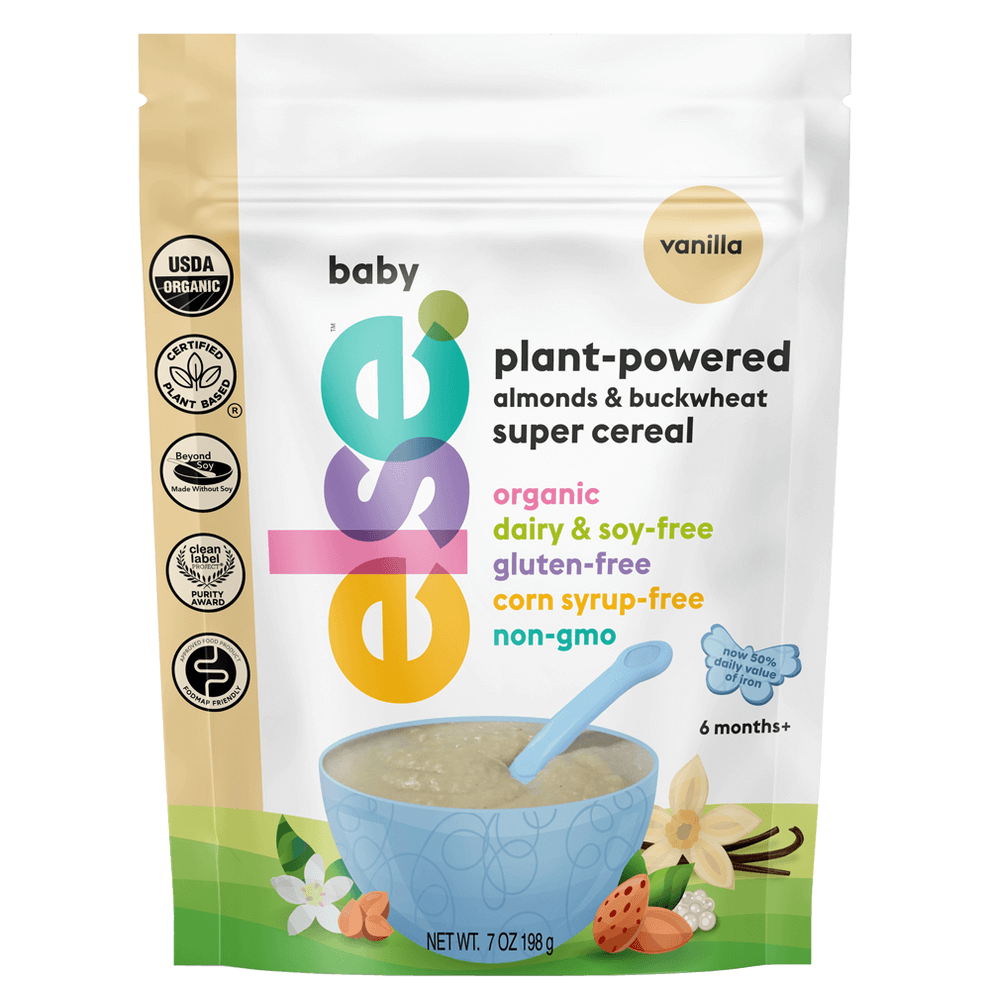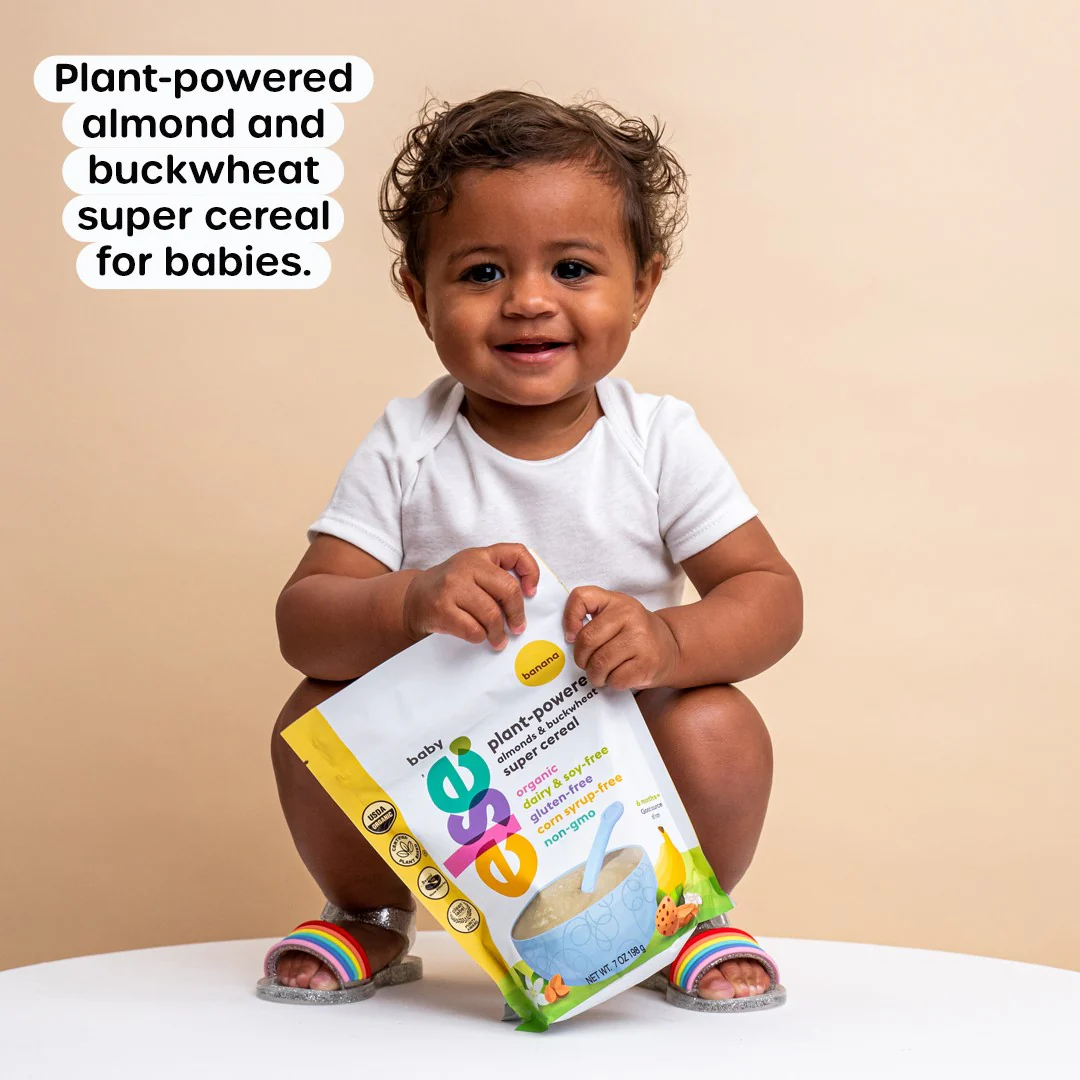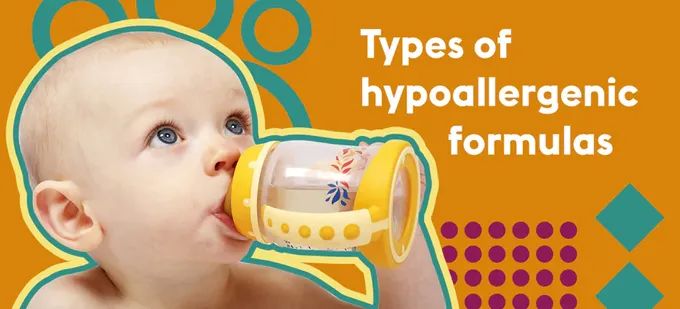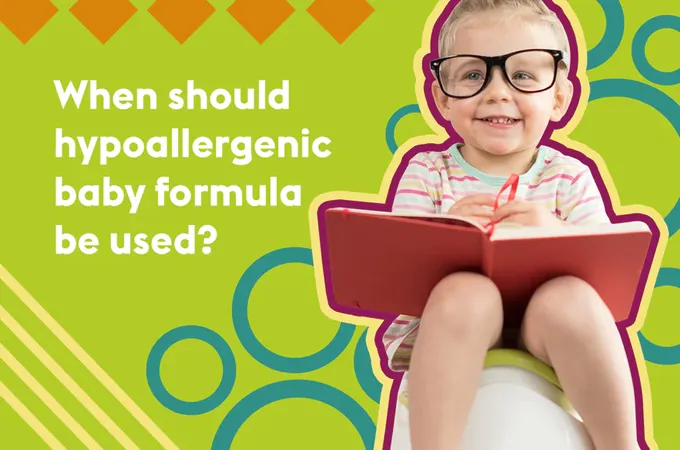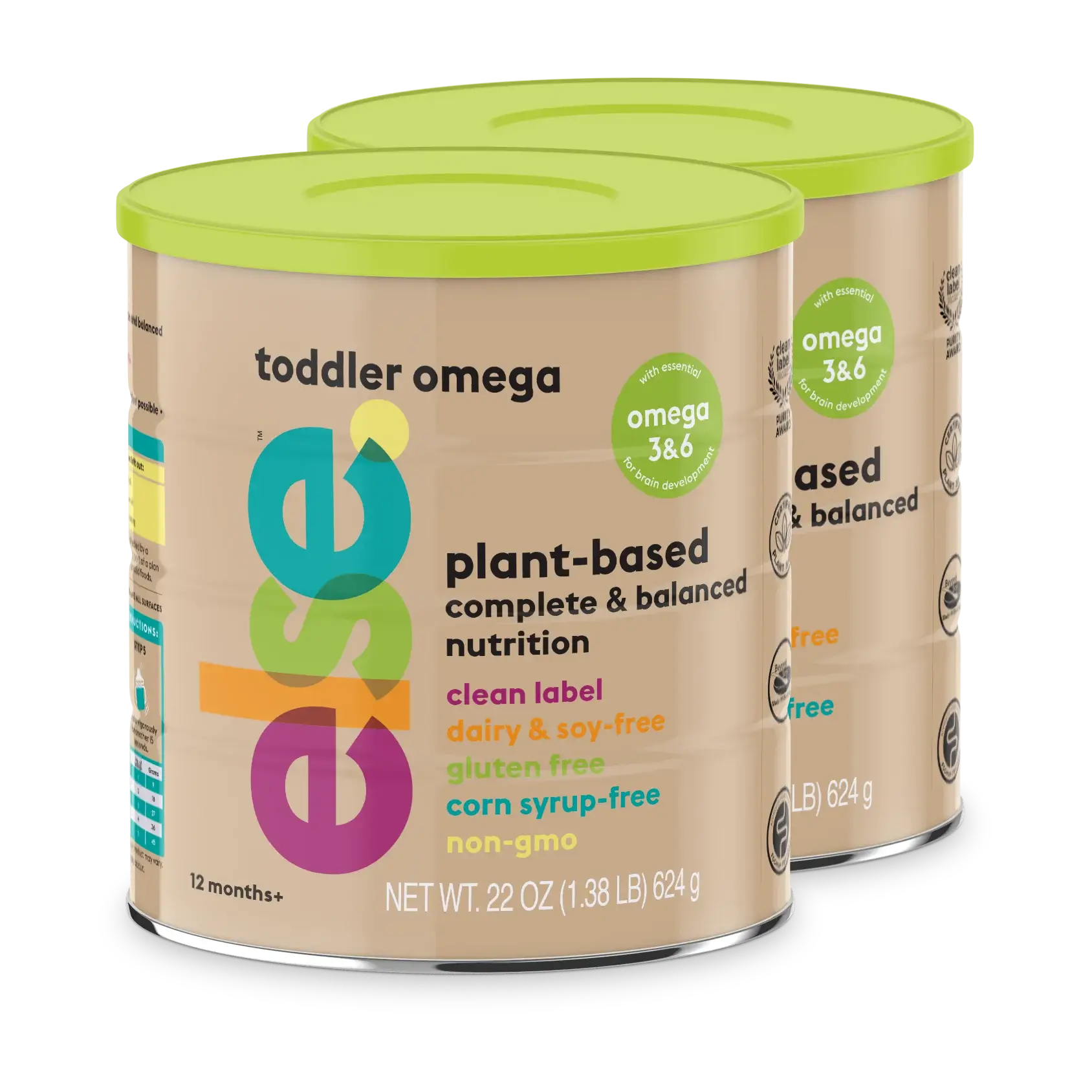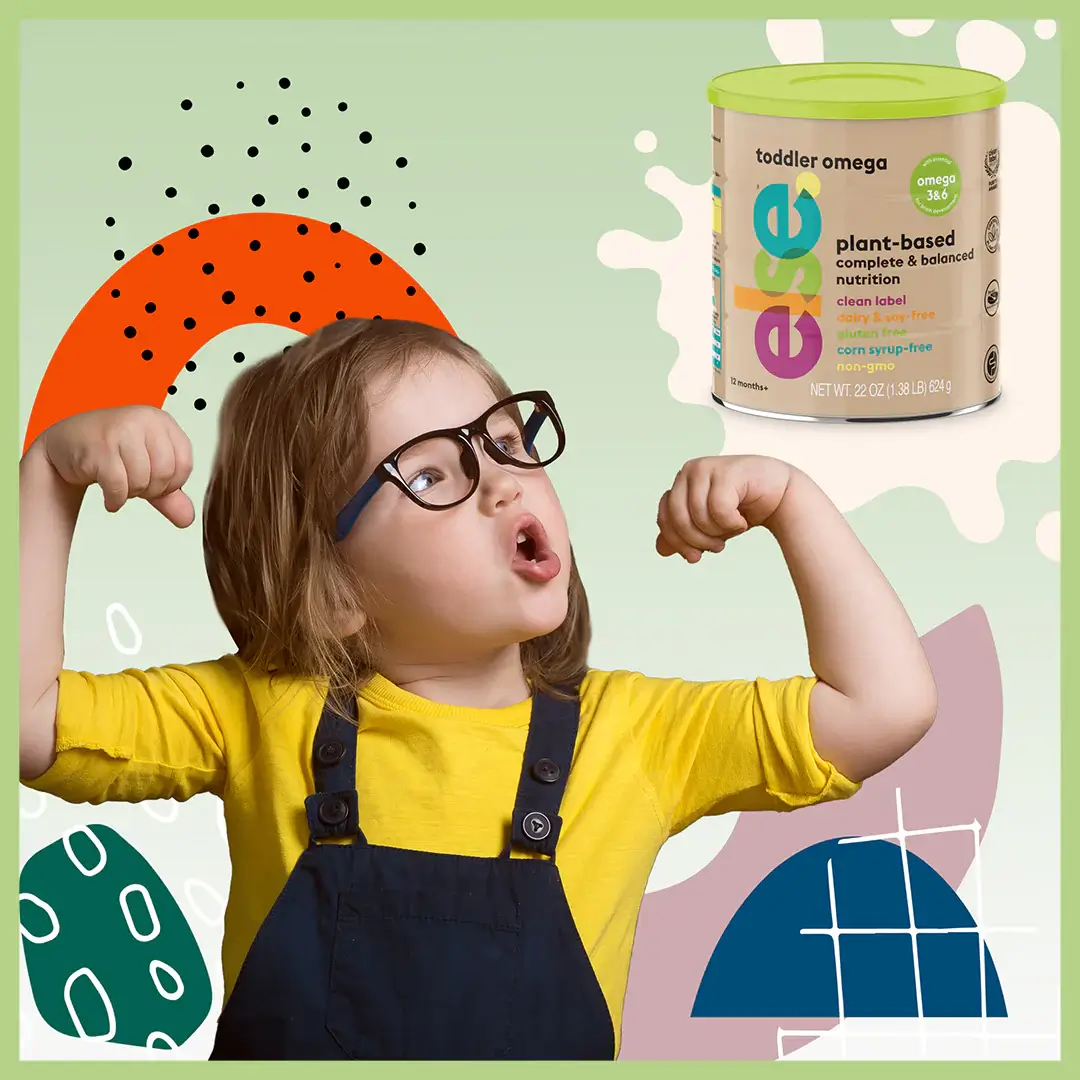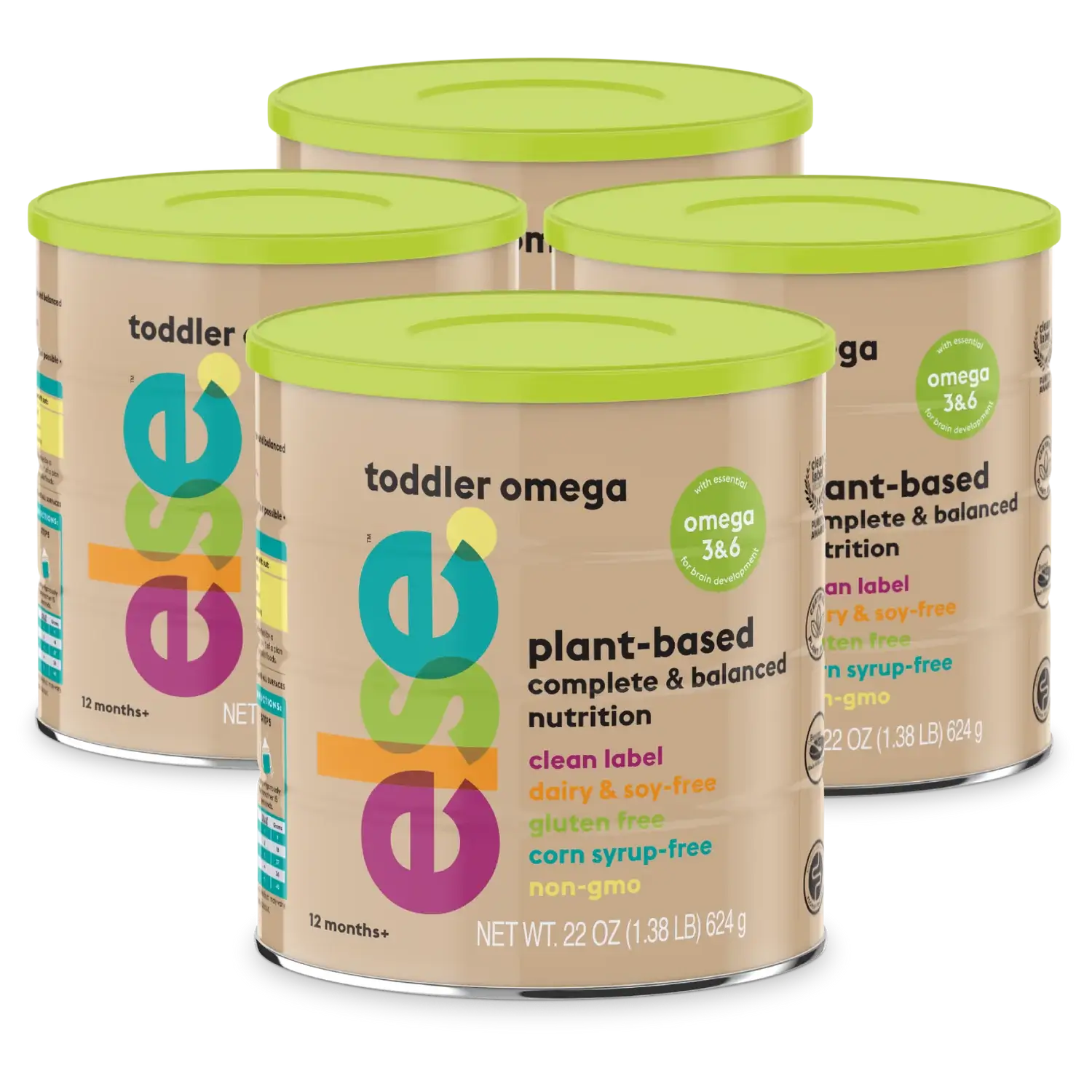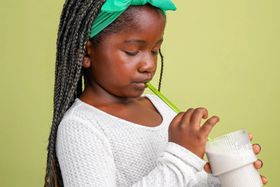Hypoallergenic Formula: Everything You Need to Know
Updated December 2, 2024

Expert tips on selecting the best formula for your sensitive baby's needs, considering factors like allergy triggers, nutritional content, and feeding preferences.
Some babies are born with or can develop allergies to food and food intolerances. A mother may avoid eating the allergens for breastfed babies, and a baby can continue to breastfeed safely. For those infants whose symptoms do not improve or whose mothers cannot tolerate a restricted diet, the best way is to find hypoallergenic formula as an alternative.
If your baby has been diagnosed with a food allergy or you suspect they have an allergy, you may have many questions about how to feed your baby. There are a variety of hypoallergenic formulas on the market to choose from. Each formula has its unique nutritional profile to ensure your baby’s safety and growth.
Food Allergy vs Food Intolerance
Allergies are overzealous immune responses. They occur when your baby’s immune system attacks a food, incorrectly thinking that the food is an invader. The immune system will affect many body parts and, if severe, can be life-threatening.
It produces histamine to defend the body and causes various symptoms, like swelling, itchiness, and gastrointestinal discomfort.
Approximately 90% of children's food allergies are caused by just six foods or food groups:
- Milk
- Eggs
- Peanuts
- Tree nuts
- Soy formula
- Wheat
Know the sustainability formula and ingredients mixed in your child’s milk or food alternative.
When Intorelance Strikes?
An intolerance occurs when the body lacks one or more digestive enzymes to break down a particular food. This can irritate your baby’s digestive system and cause symptoms like diarrhea, gas, and bloating.
So be sure to have a stock of foods with healthy fats for toddlers, an alternative to cow’s milk for babies, or a gentle formula in case allergies or lactose intolerance develops. Although a food intolerance is not life-threatening, it can lead to dehydration and impaired growth.
What Is a Hypoallergenic Formula?
According to the research, the prevalence of allergy to cow’s milk affects roughly 2 to 3% of infants. The symptoms of allergy to cow’s milk typically appear between the first 3 to 6 months of life. If breastfeeding isn’t an option, the next step after a diagnosis is finding the best hypoallergenic formula for your baby.
You may come across various hypoallergenic baby formulas in your quest for a safe and tolerable formula for your baby. Hypoallergenic formulas are designed for babies who can’t tolerate cow’s milk-based formulas.
The term “hypoallergenic” means that the formula contains protein that has been hydrolyzed or broken down into tiny proteins. These tiny proteins are less likely to cause an allergic reaction.
The extent of the allergy will determine how small the proteins need to be for a baby to tolerate the standard formula. For example, a baby with a very severe allergy may not be able to accept any protein particles and, therefore, will require an “elemental” formula. This formula contains only amino acids, the building blocks of protein.
What Makes a Formula Hypoallergenic?
Specific criteria have to be met before an infant formula can be labeled as “hypoallergenic.” According to the American Academy of Pediatrics (AAP), hypoallergenic infant formula must be:
- Studied in a clinical trial
- Studied children with allergy to cow’s milk
- Tolerated (no signs of an allergic reaction) by at least 90% of the patients
4 Types of Hypoallergenic Formulas for Babies
The type of hypoallergenic formula you choose for your baby will depend on various factors, including allergy severity. The following are various formulas available to choose from:
1. Soy-Based Formulas
While they are an alternative to cow’s milk formulas, they aren’t considered hypoallergenic. According to the literature, up to 50% of children with a cow's milk protein intolerance also develop soy protein intolerance if fed soy-based alternatives. Consequently, soy-based formulas are not usually viable for babies with a cow's milk protein allergy or intolerance.
2. Partially Hydrolyzed
The proteins are only partially broken down in a partially hydrolyzed formula. These formulas are not used for babies with a milk protein allergy because they aren’t considered hypoallergenic. Babies can still react to this sized protein molecule.
3. Extensively Hydrolyzed
The formula contains protein that is extensively broken down into smaller pieces. Babies won’t typically react to this type of formula due to the tiny milk protein size. Approximately 90% of babies with an allergy to cow’s milk can tolerate considerably hydrolyzed formulas.
4. Amino Acid-Based
Amino acid-based formulas, also known as elemental formulas, contain no large or small protein molecules. Instead, the proteins are broken down into their building blocks, called amino acids. These formulas are considered 100% non-allergenic and are used for the roughly 10% of babies who cannot tolerate extensively hydrolyzed formulas.
Is Hypoallergenic Formula Safe?
Hypoallergenic formulas must meet strict safety standards to ensure optimal growth and development. To be labeled hypoallergenic, these formulas must prove that they don’t cause reactions in 90% of infants or children with confirmed allergy to cow’s milk.
For a baby with a severe allergy who isn’t breastfed, hypoallergenic formula is the only safe way to feed your baby. Even when a severe allergy isn’t present, babies with mild allergies and intolerances to milk protein may benefit from a hypoallergenic formula.
Allergies to food and intolerances can wreak havoc on your baby’s comfort. They can cause pain and distress and may even lead to additional health complications if not treated. This type of formula is considered a safe and effective treatment option for babies with a milk protein allergy.
When to Use Hypoallergenic Baby Formula
The American Academy of Pediatrics recommends using hypoallergenic formulas in babies with apparent medical symptoms that would benefit from a specialty formula.
A hypoallergenic formula may be indicated when there is a strong family history of food or environmental allergies. A child’s risk of developing a food allergy in the first year increases to approximately 10% if one parent has allergies and 20% if both parents do.
It is essential to be aware of the common symptoms associated with allergy to cow’s milk so you know when to make changes to help alleviate discomfort.
For severe allergies, a new formula should be confirmed with a doctor before switching to ensure no contamination. Finding the right hypoallergenic formula can be tricky, so it is scary to hear that there could be a shortage.
Although unlikely, don't panic if you can't find your typical formula; look online or contact your doctor immediately to see if they know where to find some.
Sign of Severe Allergic Reactions to Formula
Babies with severe allergic reactions to food or milk proteins will show some of the following symptoms:
Reflux
You may see many parents and caregivers with a burp cloth hanging from their shoulders. This is because most babies spit up, also known as reflux. While spitting up is normal, having more severe reflux symptoms is not.
Symptoms of severe reflux include:
- Throwing up lots of liquid
- Choking or gagging
- Arching away from the bottle or breast
- Expressing irritability with feedings
- Poor weight gain
Vomiting
Occasionally, spitting up after feeding is to be expected. However, vomiting, a more forceful projection of stomach fluids, may indicate that your baby has an allergy or an intolerance. Speaking with your healthcare professional to rule out anything more serious is important.
It’s also important to know the signs of dehydration to help avoid further medical complications. Symptoms of dehydration may include a few or no tears when crying, fewer than four wet diapers per day, dry lips, unusual fussiness, and appearance of weakness or limp.
Diarrhea
Diarrhea can signify that your baby has a food allergy or intolerance and may require a hypoallergenic formula.
However, it can be a challenge trying to decipher diarrhea from regular baby poop. Breastfed babies typically have runny stools, while formula-fed infants tend to be thicker.
Diarrhea, on the other hand, will be more frequent, watery, and sometimes foul-smelling. Diarrhea can lead to dehydration, so know the signs to prevent further medical complications.
Bloody Stools
Babies with food intolerances or allergies may have bloody stools caused by the formation of small ulcers within the GI tract. The sight of bloody stools for parents can be quite jarring.
However, the treatment is simple when the issue is related to an intolerance or allergy. If a mother is breastfeeding, she would be placed on a dairy-free diet, or the baby can switch to a hypoallergenic formula.
It is important to note that approximately 50% of babies allergic to cow's milk protein may also be allergic to soy protein. Therefore, if your baby's symptoms don't clear up, it is recommended that a nursing mother avoid both soy and dairy or switch to a soy-free formula.
Gassiness
Gassiness is a normal part of a developing GI system. Excessive gassiness accompanied by a bloated stomach, clenched fists, and/or a foul odor may be a sign of a milk intolerance or allergy.
Constipation
Constipation is another sign that your baby may not tolerate cow’s milk protein. If your baby’s stool appears as small pellets or as a hard ball, your baby may be constipated. A hypoallergenic baby formula might help.
Respiratory Symptoms
If your baby starts wheezing or has other respiratory symptoms after feedings, they may have a cow’s milk allergy that requires immediate attention. Even if you notice mild respiratory symptoms, speak with your healthcare professional about the possibility of an allergy or intolerance. Mild respiratory symptoms may include sneezing, runny nose, and a persistent cough.
Anaphylaxis
Anaphylaxis is an extremely serious allergic reaction that comes on quickly, affects the whole body, and is potentially life-threatening. Signs of anaphylaxis include breathing difficulties, fainting, and swelling around the face.
Thankfully, this type of allergic reaction is not common in infants. However, if you suspect your child is experiencing anaphylaxis, immediately seek medical attention.
Extreme Fussiness
Extreme fussiness, also known as colic, is fussiness and extensive crying, even when basic needs have been met. The baby is not hungry, tired, or does not require a diaper change.
According to research, colic can affect up to 20% of infants. The formal definition of colic is crying for more than 3 hours per day, for more than three days per week, and more than three weeks.
Colitis can result from extreme abdominal pain caused by a milk protein allergy or intolerance, which a change in diet or formula may help.
Itchy Rash
Babies can develop rashes for a variety of reasons. Sometimes, rashes may be due to the milk protein they eat if they have an allergy. If your baby develops hives after eating, it may be caused by a food allergy.
A food allergy or intolerance may also present as eczema. Eczema is characterized by red bumps on your baby's face, scalp, hands or feet that may itch or feel like dry, scaly skin.
Inadequate weight gain
Most babies double their birth weight by six months and triple it by 12 months.
Slow weight gain, also known as Failure to Thrive (FTT), is a cow’s milk allergy symptom. Food allergy reactions can often create problems digesting and absorbing nutrients due to issues like vomiting or diarrhea, leading to impaired growth.
Can a Baby Be Allergic to Hypoallergenic Formula?
Since there are a variety of formulas marketed as “hypoallergenic”, some babies still may be allergic to it. It is possible for a baby with allergies to certain types of food to react to partially hydrolyzed or extensively hydrolyzed formulas. This is because the protein in these formulas, albeit small, is still intact.
On the other hand, Amino acid-based formulas don’t contain actual allergen proteins. They only contain amino acids, which can’t cause a reaction. Amino acid-based formulas have been subjected to extensive clinical testing and meet the standard for complete hypoallergenicity.
Does Hypoallergenic Formula Cause Gas?
Gas is generally caused when a baby swallows too much air while feeding. However, the type of formula you choose may contribute to gas production or help alleviate it.
For example, an intolerance to dairy and/or soy can cause gas and other uncomfortable GI symptoms. A lactose-free and/or soy-free formula may benefit babies with this sensitivity.
Can Hypoallergenic Formula Cause Reflux?
Acid reflux happens when stomach contents and acid flow back into the throat and esophagus. A typical, healthy infant with mild acid reflux may spit up after feedings but is gaining weight and generally isn’t upset.
Frequent spitting up and/or vomiting may indicate your baby cannot tolerate formula. Hypoallergenic formulas are gentler on a baby’s system and can effectively reduce reflux. They are often recommended for babies with allergies to select food.
Can Hypoallergenic Formula Cause Diarrhea?
It can be a challenge trying to distinguish regular baby poop from diarrhea, as baby stool often appears soft and runny. Signs of diarrhea may include extremely liquid bowel movements an increase in the frequency of stools, and the stool may be accompanied by an unusually foul smell.
Additionally, bowel movements' color, consistency, and frequency can differ for your baby daily.
If you have switched to a hypoallergenic formula and your baby is experiencing diarrhea, this is normal for some time. Your baby’s body is digesting and absorbing the hypoallergenic formula differently than a previous standard formula. It can take up to 2 weeks for your baby to adjust to a new formula.
Alleviating Hypoallergenic Symptoms
Regardless of the cause of your baby’s reflux, there are some steps you can take to help alleviate symptoms:
- Burp your baby after every 1-2 oz. of formula
- Offer smaller, more frequent feedings
- Keep your baby in an upright position for 30 minutes after each feeding
- Avoid vigorous movement and active play after a feeding
Alternatives to Hypoallergenic Formula
Breastmilk
According to the American Academy of Pediatrics, breast milk provides optimal nutrition for your baby. Occasionally, a food protein (allergen) can pass through the breast milk and trigger a reaction.
However, babies with allergies to particular foods can also benefit from breastfeeding if the lactating mother removes the foods that trigger the baby’s symptoms from their diet.
Soy-Based Formula
Soy formulas contain soy protein rather than cow’s milk protein. These are sometimes recommended for babies who cannot digest lactose, the main carbohydrate in cow's milk formula.
However, up to 50% of children with a cow's milk protein allergy can also have a soy protein intolerance. These babies will require a true hypoallergenic formula, such as an extensively hydrolyzed or amino-acid-based formula.
Soy-based formulas contain high levels of plant based estrogen-like compounds. Studies show that infants who consume soy-based formulas have differences in reproductive system tissues and cells, raising questions about the long-term effects of these differences.
Goat Milk-Based Formula
Occasionally, a baby that is intolerant to standard milk made with cow milk may have an easier time tolerating a formula based on goat milk. A goat milk-based formula contains smaller fat molecules than a regular formula made with cow’s milk.
However, it is important to note that a formula made from goat’s milk is not a suitable alternative for babies with a cow’s milk protein allergy. Most children that react to cow’s milk protein will also react to goat’s milk protein. Goat milk-based formula is difficult to come by in the US and may have to be purchased in Europe.
Rice Milk
Some formulas can be made from hydrolyzed rice protein as a plant-based alternative to cow’s milk protein formulas. Rice is one of the few kinds of foods that is not likely to cause allergies.
Studies show that hydrolyzed rice protein formulas can be used for babies with cow’s milk protein allergies without compromising normal growth patterns. However, more research on the safety and long-term growth trends using hydrolyzed rice protein formulas is needed.
The hydrolyzed rice-protein formula is not widely available in the United States but can be found in some countries in North Africa, the Middle East, and South America.
How to Choose a Hypoallergenic Baby Formula
Hypoallergenic baby formulas are intended to safely feed babies with allergies while supporting their optimal growth and development. Almost all children with cow’s milk protein allergy will require a hypoallergenic formula without breast milk.
It is important to notify your healthcare practitioner of the first signs of food allergy symptoms to prevent discomfort and suboptimal growth.
- Standard Baby Formula: The protein in cow’s milk causes babies with a cow’s milk protein allergy to experience unpleasant symptoms. A standard baby formula is made with cow’s milk protein, which contains large protein molecules that a baby with an allergy will react to.
- Partially Hydrolyzed: Some babies can tolerate partially hydrolyzed formulas because their protein chains are slightly smaller. However, babies with a true cow’s milk protein allergy will not be able to accept this type of formula.
- Extensively Hydrolyzed: This formula contains tiny protein particles, and most babies with a cow’s milk allergy can tolerate these formulas. Babies with a severe milk protein allergy may not be able to tolerate extensively hydrolyzed formulas and may require an amino-acid-based formula.
- Amino Acid-Based Formulas: Amino acid-based formulas are broken down into the building blocks of protein, and amino acids. Amino acid-based formulas will not cause a reaction in cow milk allergy babies because they are non-allergic.
Not every baby will respond well to every hypoallergenic formula. You may have to try more than one before you find a brand that works for your baby. The best hypoallergenic formula may be found through trial and error.
If your baby needs hypoallergenic formula, talk to your baby's doctor before switching. Make sure not to use homemade formula, as it does not include all the necessary nutrients your little ones need.
Promising News
While navigating the world of allergies can be challenging, promising news is ahead. According to the latest research, approximately 50% of affected children develop tolerance by the age of 1 year. More than 75% are tolerant by the age of 3 years, and over 90% at six.
Else Nutrition has created an innovative formula option for those seeking another alternative. Made from almonds, tapioca, and buckwheat, Else toddler formula does not contain soy or dairy, which are common allergens that lead parents to search for different ingredients. Else’s baby formula, with similar ingredients, is also currently in development.







